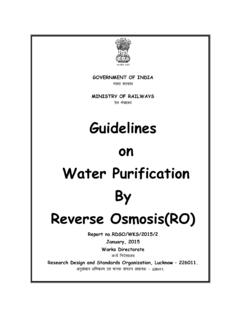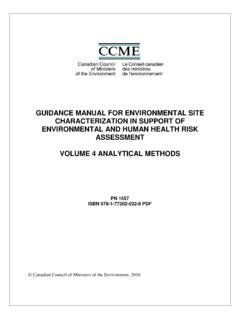Transcription of Compatible Chemical Storage Reference
1 The University of Iowa Compatible Chemical Storage Reference Appropriate Chemical Storage plans are designed to control physical and health hazards associated with laboratory Chemical Storage . There are several Chemical compatibility schemes or methods available. Each one is somewhat different but they have many similarities. No one system can address every possible undesired Chemical combination. This guideline discusses some of the Compatible Storage schemes that may be used so that chemicals of different hazard classifications can be safely stored together.
2 The (material) safety data sheet from the manufacturer should be consulted as a primary Reference for Storage guidance for that material. EHS offers a safety course through ICON that provides more detailed information about safe Chemical Storage . This may be accessed through HR Self Service and/or via the EHS web site. Chemical Storage Safety W126CM; this EHS training is recommend initially and annually. The audience is persons who work with and/or store chemicals in research labs. General Guidelines for Safe Chemical Storage Designate a safe Storage location for each Chemical .
3 Storage location should be marked on each Chemical container. Always store chemicals by recommended Compatible Storage group. Alphabetical Storage is only used withina Compatible Storage group, never as a Chemical Storage plan. When determining how to store the Chemical , always check the Chemical label and MSDS/SDS first for themanufacturer s recommended Compatible Storage . Keep chemicals away from ignition sources. Store flammable and combustible chemicals in an approvedflammable chemicals Storage cabinet.
4 Avoid storing chemicals in direct sunlight or near a localized heat source. Store flammable and potentially explosive chemicals according to the manufacturer s directions or according toMSDS instructions. Use secondary containers to physically segregate incompatible chemicals when they are stored in the samephysical location. Label and date Chemical containers when received and opened. Label working solutions or chemicalsremoved from their original container so that all individuals know what is in a given container.
5 Maintain Chemical identification labels, containers, and lids in good condition. Keep Chemical containers closed with properly fitted caps when not in use. Hazardous chemicals must not be stored above shoulder height. Do not store stock Chemical supplies in a fume hood. This interferes with proper hood airflow and can providefuel if there is a fire within the fume hood. Flammable chemicals should not be stored in a fume hood. Chemicals should never be stored on the floor. Chemical shelving should have containment lips or trays to contain small leaks/spills.
6 Chemical cabinetsshould have a leak proof door sill. Shelving should be strong enough to hold the weight of chemicals being stored on them. Do not overload shelves. Always secure shelving to a permanent structure. Shelves should be coated with a Chemical -resistant material such as Chemical -resistant paint or another coating such as epoxy. Do not store chemicals in a domestic refrigerator or walk-in cooler. These refrigeration devices contain ignition sources such as unsealed electrical contacts.
7 Flammable-safe refrigerators should be used whenever flammable chemicals need to be refrigerated. Additionally, walk-in coolers are not vented, creating the potential for accumulation of Chemical vapors. Every 60 days, as stated in the DHS Chemicals of Interest reminder e-mail sent by EHS, check that your documented Chemical list matches your lab s physical Chemical inventory (or at least once a year if your lab purchases or uses few chemicals). At the time you perform your inventory, look for expired chemicals and dispose of them properly.
8 Secondary Containment Guidelines Secondary containment is recommended to segregate chemicals from other incompatible chemicals within the same Storage cabinet. Segregating incompatible chemicals using secondary containment is helpful when Chemical Storage space is limited. Secondary containment is also recommended when storing highly toxic materials to minimize exposure should the primary container become damaged.
9 For example, store liquid mercury inside a labeled unbreakable secondary container. Small containers of Compatible chemicals may be stored in a desiccator or other secure device. Secondary containers should be Compatible with the chemicals stored in them. They should not corrode or degrade easily. Chemical Storage Groups and Code Systems It is important that you segregate hazardous materials according to Compatible Storage Groups.
10 The Storage groups allow you to safely organize chemicals with different or multiple hazards. There are several appropriate Chemical Storage strategies that may be used. The first example below is a list of Compatible groups developed by Stanford University (ChemTracker) into which chemicals can be segregated. Examples of laboratory chemicals in the following Compatible Storage Groups are found on page 4 below. Compatible Storage Groups, Stanford University ChemTracker A organic Bases, Flammables, and Poisons B Pyrophoric Materials and Water Reactive Materials C Inorganic Bases, Oxidizers, and Poisons D organic Acids, Flammables, and Poisons E Oxidizers, organic Peroxides, and Acids F Inorganic Acids not including Oxidizers and Combustibles G Not Intrinsically Reactive or Flammable or Combustible J Poison Compressed Gasses.








